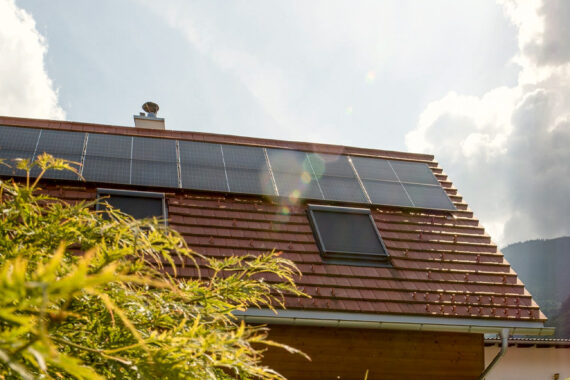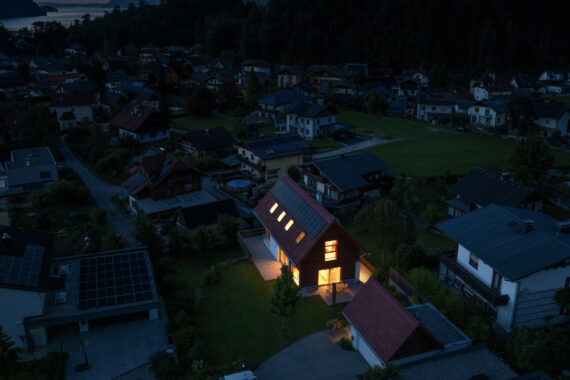Solar energy is gaining in popularity. And no wonder—it’s efficient, cheap, and creates independence. Just stick a few PV modules on the roof and your own self-generated solar power starts flows out of the outlet, right? Not quite. You’re still missing an essential part of the photovoltaic system: the inverter. It’s considered the heart and brain of every PV system, but what does an inverter actually do? And do I need one with or without a hybrid function?
The task of the PV modules installed on the roof or balcony is obvious. Electrons released from the solar cells due to the photoelectric effect begin to flow, converting the energy in sunlight directly into electrical energy.
But what happens next? Why are PV modules on their own not enough to benefit from self-generated electricity? Why do PV systems need inverters and what is the purpose of these inconspicuous devices, which are usually housed in the basement or garage?
Read on to find out why not all electricity is the same and what this has to do with a world-famous Australian rock band.
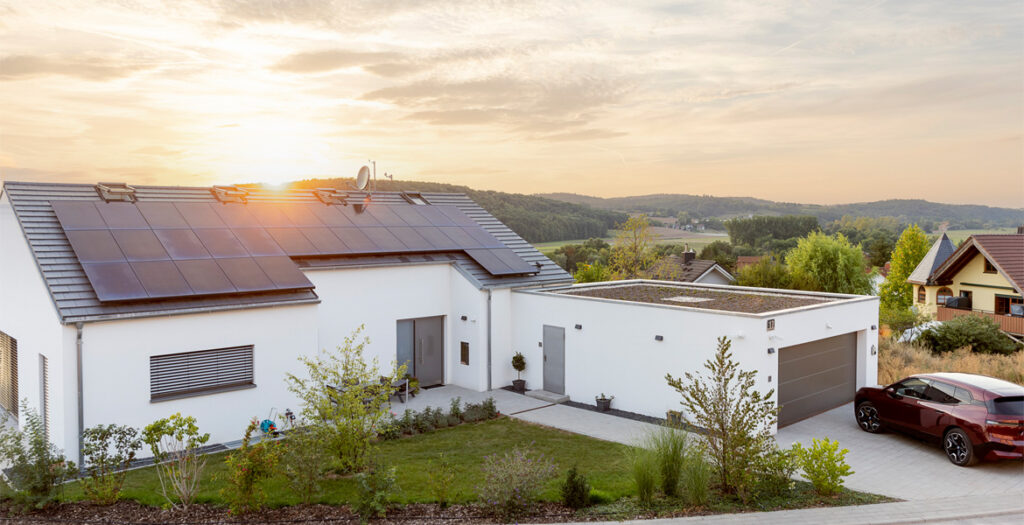
AC/DC is not only a band
Almost every one of us has heard of the band AC/DC, yet their choice of name is more than just a random string of letters. It designates two fundamentally different types of electricity with different properties and areas of application.
“AC” stands for “alternating current”, a form of electricity where the flow direction and the voltage periodically change. Its biggest advantage is that it can be transmitted easily over long distances, which is why power plants and substations work with alternating current. Powerful household appliances such as the oven and the refrigerator also operate on alternating current.
Batteries work with “direct current” (DC), which is why many digital devices such as smartphones and laptops operate on DC. In order for the batteries to be charged, the charger must first convert the alternating current from the outlet into direct current.
As the name suggests, direct current means that the current flows continuously in one direction. “When the sun’s rays hit the modules of your PV system, the solar cells turn the light energy into electrical energy. As this does not change direction, the electricity generated is direct current,” explains Michael Raunigg, a solar energy expert at Fronius International.
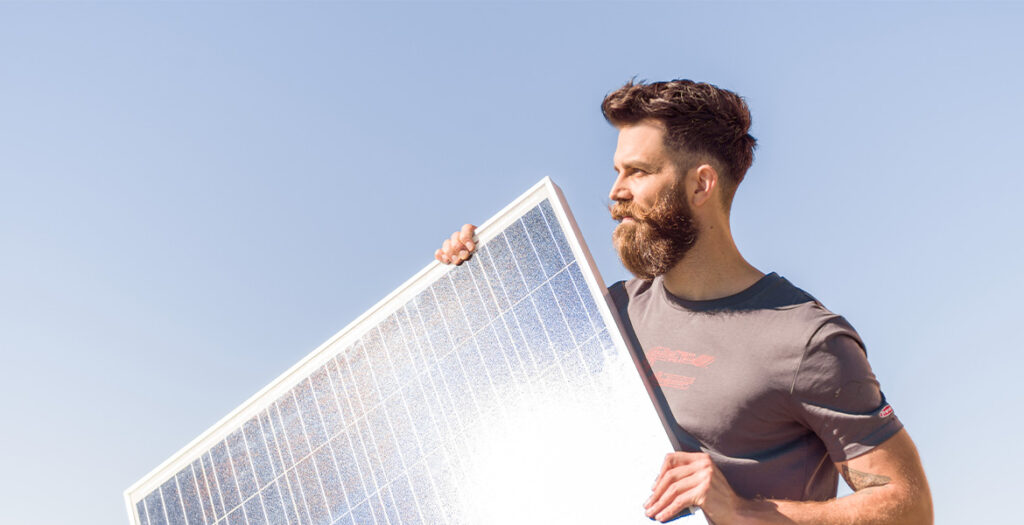
Heart and brain of the photovoltaic system
This is where the inverter comes in. “The inverter transforms the direct current generated by the PV modules into the alternating current needed by domestic appliances such as the TV or the dishwasher. Only then can the solar power generated be used in the home,” continues Michael Raunigg. Any surplus energy left over can be fed by the inverter into the public grid or used to charge a battery storage device.
While converting direct current into alternating current is the main function of an inverter, it is by no means the only function. Other tasks performed by the inverter include:
- Yield optimization: There are several MPPTs (maximum power point trackers) in the inverter, which determine the point on the power curve of a PV module string at which the combination of voltage and amperage achieves the maximum output.
- Visualization: Monitoring apps like Fronius Solar.web summarize all the system data (such as power generation and consumption, battery state of charge, and grid feed-in) and present it in a clear, visual format. With smart inverters, it is even possible to adjust certain settings via the app, provided your setup includes a ‘smart meter’—a bidirectional electricity meter that provides important data to the inverter.
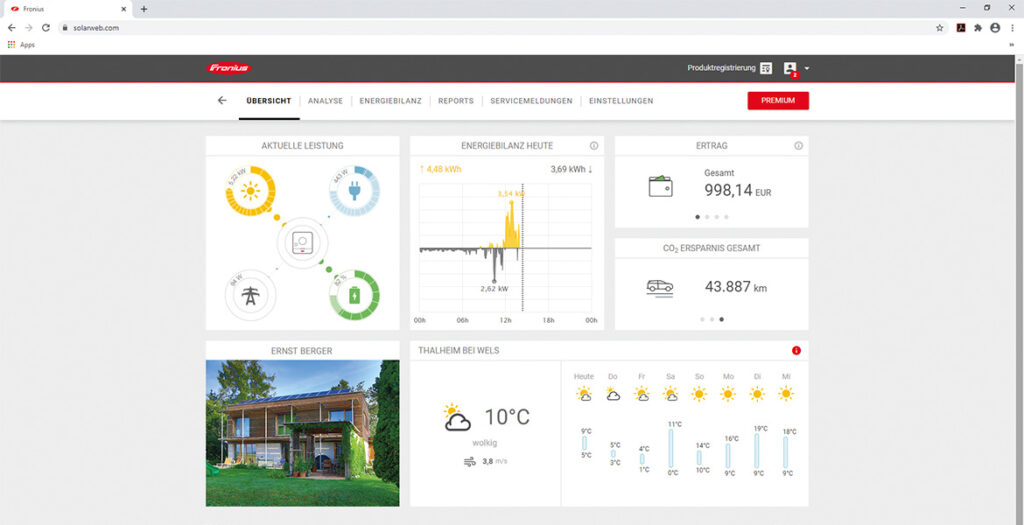
- Self-consumption optimization: The interfaces of the inverter enable other devices such as energy storage systems, charging stations for electric vehicles, and heat generators (heat pumps, boilers, etc.) to be incorporated into the PV system, allowing system owners to optimize their self-consumption rate and get more out of their solar power.
So far, so good. We’ve now summarized the basic functions of an inverter, but which one is right for you?
From micro to hybrid inverters—which is the best for me?
Attentive readers will have noticed that there are some aspects of a PV system inverter that we are yet to mention. Now that we have outlined the basics, we want to delve deeper into the matter and explore highly topical subjects such as backup power, hybrid inverters, and balcony power plants. In addition, we will answer the question of what single-phase and three-phase is all about and which type of inverter is the right one for you.
1) Hybrid inverters
The terms “backup power”, “Full Backup”, and “hybrid inverter” are closely interwoven. Michael Raunigg explains: “A hybrid inverter is required for Full Backup operation. In the event of a grid power outage (such as storm damage or for maintenance work), it maintains the household electricity supply.”

While some devices without a hybrid function can supply individual fused outlets or circuits as a backup, hybrid inverters are the only ones that can communicate with a battery storage device to control whether it is charged or discharged. Switching components that disconnect the PV system from the public grid—such as the Fronius Backup Switch and the Backup Controller—are required for both automatic and manual activation of Full Backup mode. Only the combination of hybrid inverter, battery storage device, and switching component allows a reliable power supply of the entire household to be maintained over an extended period of time—anything from a few hours to days. Ensuring a reliable power supply depends on:
- The sunlight (insolation)
- The current consumption
- The size of the PV system
- The size of the battery storage device
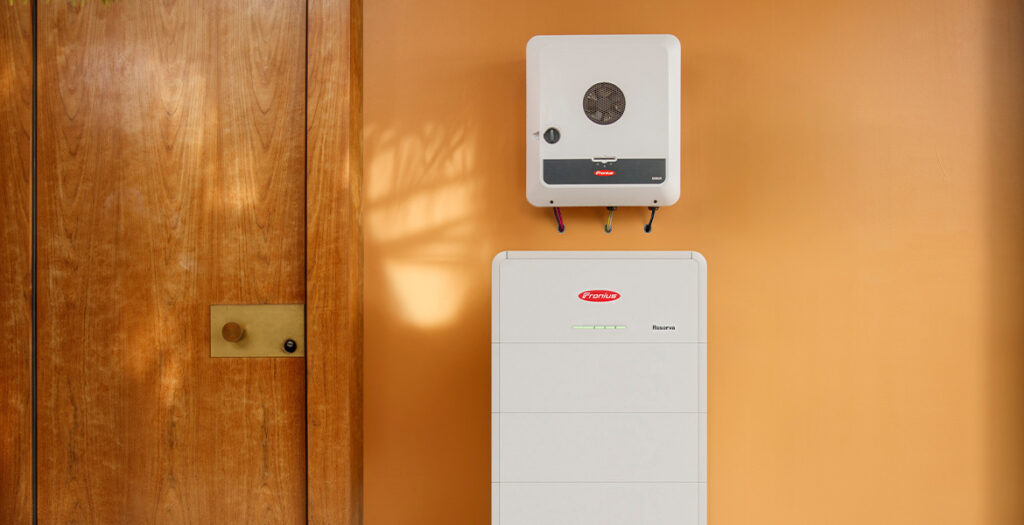
2) String inverters
String inverters bundle the energy from several PV modules connected in series, whereby several such strings can be connected to each inverter. The individual MPP trackers allow complex system designs to be implemented, for example with different orientations. Hybrid inverters can also be based on string inverter technology, but not every string inverter has a hybrid function.
3) Microinverters
Let’s move on to the smallest models: the microinverters. Used in small photovoltaic systems with a maximum output power of 800 W (such as balcony power plants), they perform exactly the same basic tasks as any inverter, but are usually smaller. Balcony power plants are sometimes available as complete sets, but the PV modules and corresponding inverter often have to be purchased separately.
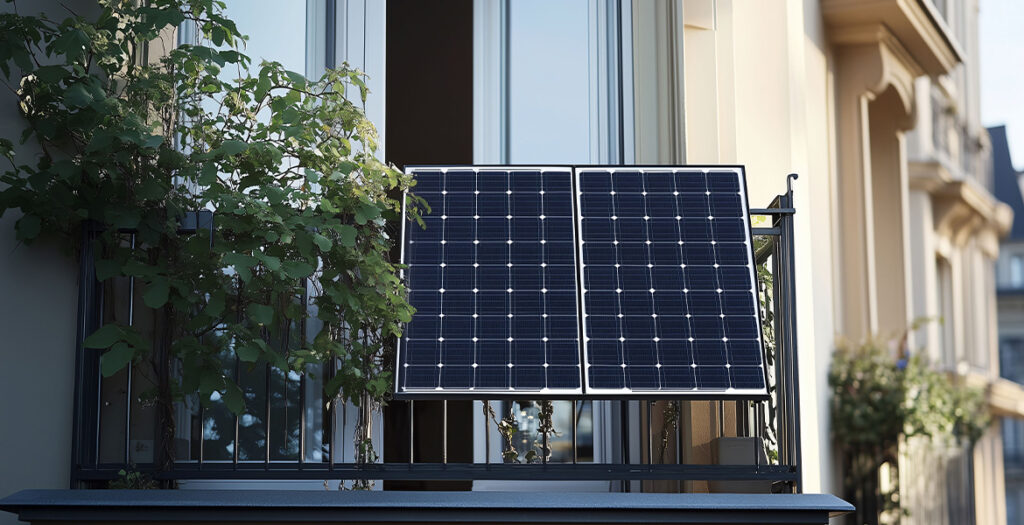
4) Project inverters
At the other end of the performance scale are project inverters, which we are only mentioning here for the sake of completeness. They provide enough power for commercial photovoltaic systems such as e-charging parks at malls or for industrial production halls and large agricultural operations.
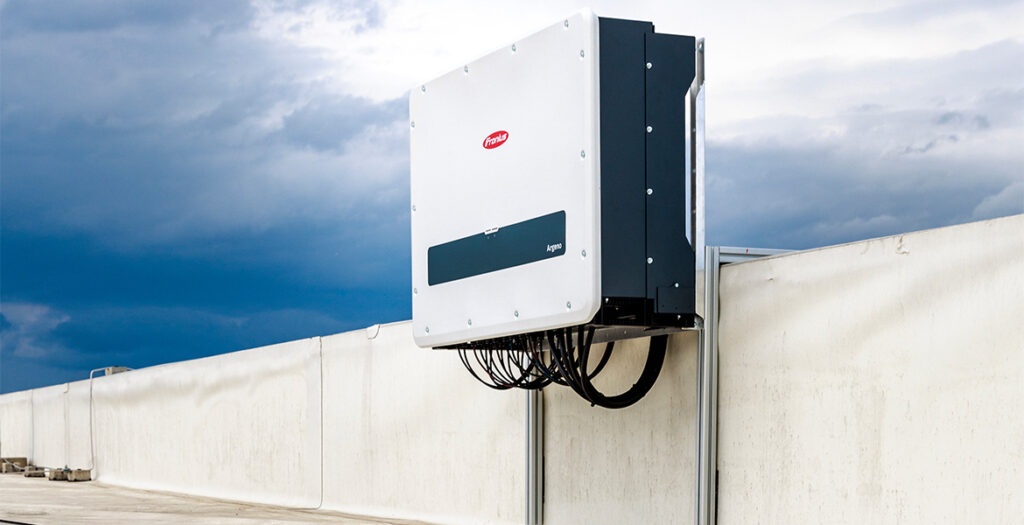
Single-phase or three-phase inverters: what do I need?
Let’s now have a look at the last, but by no means least important part of our introduction to inverters: single-phase or three-phase functionality. Behind the complex terminology is actually nothing more than the number of cables in a power grid. In single-phase grids, there is one ‘phase’ (basically the name of the conductor that carries the current) in addition to the neutral and the ground conductor. Three-phase networks therefore not only have one such conductor, but three. This means that they can deliver up to three times as much power as their single-phase counterparts, making three-phase networks more powerful at the same amperage.
The same applies to single-phase and three-phase inverters: “At Fronius, we distinguish between the single-phase Primo and the three-phase Symo. Devices that work with three live conductors can feed up to three times as much alternating current into the household or public grid as single-phase inverters. This is particularly important if several power-intensive appliances or three-phase loads such as heat pumps, electric car charging stations, or large machines are being operated at the same time,” explains Michael Raunigg on the most important differences.
Why do we even have single-phase inverters at all?
That is a valid question. After all, why would anyone choose single-phase devices when three phases allow for significantly more power? This is where regional differences come into play. Not everywhere in the world has household or public grids that are capable of handling the power provided by a three-phase inverter.
Three-phase power grids (for industrial and domestic purposes) predominate in Europe, whereas continents such as North America operate single-phase grids.
All clear?
Has the inverter fog lifted to reveal a clear and sunny landscape? We hope we have been able to answer your most burning questions about the heart and brain of every PV system.
Still unsure about the right power category for your household? Check out the following blog post for some helpful information: How much kWp do I need?
You can also contact one of our Fronius partner installers, who would be happy to help configure a PV system tailored precisely to your needs. Find out more here.
On our YouTube channel, we explain all about our products and solutions in numerous webinars and how-to videos, as well as numerous tips and tricks on how to get the most out of your PV system.
Do you still have a question that hasn’t been answered? Let us know and submit your inquiry via the support form linked here.



